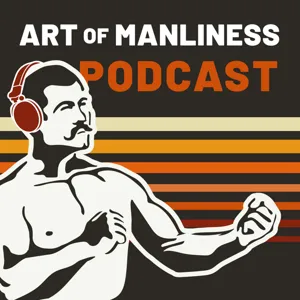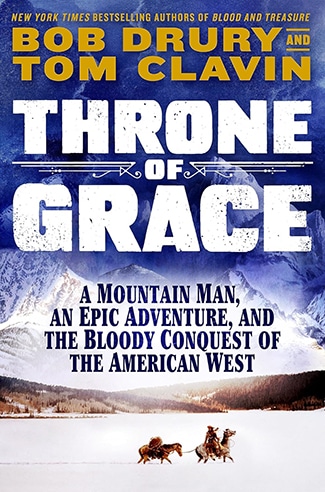Podcast Summary
Competition and Conflict in the American West: The acquisition of the Louisiana Territory led to increased competition and conflict between Americans, Native Americans, the British, and different American groups, with the beaver fur trade playing a significant role in this period.
The period between the Lewis and Clark expedition and the mass migration of Americans into the West was marked by intense competition and conflict, both politically and culturally. The acquisition of the Louisiana Territory doubled the size of the United States, and the Lewis and Clark expedition gave Americans a better understanding of the vast continent. However, this also sparked a desire to settle and colonize the land, leading to conflicts with Native Americans, the British, and even among different American groups. The beaver fur trade played a significant role in this period, with trappers and companies vying for control of the land and resources. The life of Jedidiah Smith, a prominent mountain man and explorer, intersected with these historic trends, and his exploits helped pave the way for the eventual settlement of the American West. The volatile American landscape during this time was marked by adventure, exploration, and conflict, as depicted in the new book "Throne of Grace" by Bob Drury and Tom Clavin.
Native American geopolitics in the American West: The arrival of horses and guns altered Native American territories and conflicts, leading to dangerous encounters for European settlers focused on resources.
The early 19th century American west was a complex web of geopolitics among Native American tribes and European settlers. The arrival of horses and guns drastically changed warfare, making territorial disputes more fluid and violent. The tribes in the western regions, particularly those west of the Mississippi, had vast territories centered around the buffalo and their migration patterns. European settlers, primarily beaver trappers, entered this volatile landscape with a focus on resources, often stepping into the middle of longstanding conflicts between tribes. The lack of understanding of Native American geopolitics and fluid territories led to dangerous encounters and conflicts. The arrival of Euro Americans into this complex landscape brought about a violent and dangerous milieu for the trappers, who were primarily focused on obtaining valuable beaver pelts.
Beaver Fur Industry and Conflict: The beaver fur industry fueled Western expansion through intense competition and conflict between Native Americans and European explorers, driven by economic gain and differing belief systems.
The belief systems and economic motivations of Native American tribes and European explorers clashed dramatically during the 19th century, leading to intense competition and violence over resources like beaver fur. The beaver fur industry was a significant driver of Western expansion due to the high demand for beaver pelts in Europe, which fueled a race to acquire territory and resources. This competition often resulted in conflict, with both sides using any means necessary to gain an advantage. For Native Americans, the belief that the afterlife was a beautiful hunting ground where one's physical condition mattered greatly influenced their actions in war and hunting. European explorers, on the other hand, were driven by economic gain and the desire to secure territory for their nations. The combination of these factors led to a complex and often violent history of exploration and expansion in the American West.
Jedediah Smith's Explorations: Jedediah Smith, a Puritan and educated man, answered an ad to explore the American frontier, became the first to cross the Continental Divide and help connect the contiguous US through his expeditions.
Jedediah Smith, born in 1805 in New York's Susquehanna Valley, became the ideal guide for authors Tom Clavin and I to explore the American frontier during the first half of the 19th century. Smith answered an advertisement from the lieutenant governor of Saint Louis seeking 100 men to ascend the Missouri River and trap beaver. Unlike other mountain men, Smith was a Puritan, carrying his family Bible and abhorring tobacco smoke. He was an educated man, having been taught by Methodist circuit riders. Smith's journals and letters were crucial for the authors, as they believed contemporaneous writing was the key to their books. Smith, who idolized Lewis and Clark, was an explorer at heart and wanted to fill out the blank spaces on the American map. He was the first American to cross the Continental Divide, the Escalante and Mojave Deserts, and lead a party into California from the east. In essence, Smith's expeditions helped connect the contiguous United States.
Mountain Man Survival: A mountain man, like Hugh Glass, demonstrates incredible resilience and determination to survive in the wilderness despite attacks by bears and Native Americans, and the harsh conditions.
Hugh Glass, a famous mountain man, lived an extraordinary and perilous life. He was attacked by a grizzly bear while traveling with an outfit led by Jed Smith. Despite being left for dead, Glass miraculously survived and made his way back to civilization, only to face more danger from Native Americans and the harsh wilderness. His resilience and determination earned him the title of a true mountain man. During this time, Glass also contributed to scientific advancements by sending new plant discoveries back east for study. Despite numerous attacks and setbacks, Glass continued to explore and adapt, even attempting to trade in Santa Fe before meeting a grizzly end. His story is a testament to human endurance and the spirit of adventure in the American frontier.
Mountain man rendezvous: The mountain man rendezvous was an annual event where mountain men gathered to sell beaver pelts and purchase supplies, enabling long overland trade routes and lasting for about 15 years.
The rendezvous played a pivotal role in mountain man culture during the early 1800s. Realizing they were losing money using rivers for transportation, Jed Smith discovered a pass through the mountains, enabling long pack trains to go overland. Smith and his partner, General Henry, initiated an annual event where mountain men would gather to sell their beaver pelts and purchase supplies. This tradition, known as the rendezvous, lasted for about 15 years before being overshadowed by the silk trade. It's hard to imagine the scene – men from all over the west, carrying or leading horses with hundreds of pounds of beaver pelts, gathering in a valley to trade, drink, and socialize. The rendezvous was a uniquely American phenomenon that only existed for a short time, and it's fascinating to think about what it would have been like to be there. Additionally, the myth of the Rio Buenaventura, a mythical river believed to connect the eastern and western parts of the country, drove many explorers, including Jed Smith, to search for it. Despite Smith's discoveries, the belief in the existence of the river persisted for decades.
Mountain Man's Decision: A mountain man, after living in isolation and accumulating wealth, decided to return to civilization due to homesickness and the desire for familial and religious connections. However, his journey back was threatened by Native American tribes.
Jedediah Smith, a famous mountain man, after living in the wilderness for five years and amassing wealth, decided to leave the mountains and return to civilization due to homesickness and a desire for religious and familial connections. He sold his company, bought a farmstead for his family, and wrote detailed reports to the U.S. government about the resources and military capabilities in the western territories. However, on a journey to bring his younger brothers into the mountains, his wagon train was ambushed by a powerful alliance of Kiowa and Comanche warriors, leaving him with the difficult decision to either fight, flee, or surrender.
Mountain Man Era: The Mountain Man Era, from the 1820s to the late 1830s, was a significant time for American exploration and expansion of the western half of the contiguous United States, marked by figures like Jed Smith, despite his lack of fame compared to contemporaries.
Jed Smith, a prominent mountain man and explorer of the western half of the contiguous United States during the 1820s to the late 1830s, is not as well-known as his contemporaries like Kit Carson, Davy Crockett, and John C. Fremont. Smith's lack of self-promotion and early death prevented him from achieving the same level of fame. However, his contributions were significant, as he filled in the gaps of American knowledge about their newly acquired territory. The age of the mountain man ended by the late 1830s, with the decline of beaver and the rise of silk headwear in Europe. The short period of this era was an exciting and important one due to the exploration and expansion of the American West. To learn more about Smith and his story, readers can check out Bob Drury's book "Throne of Grace," available on Amazon and at independent bookstores.








